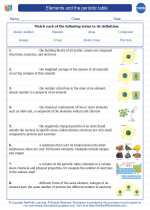Biomass Energy
Biomass energy is a renewable energy source derived from organic materials, such as plants, agricultural and forestry residues, and organic waste. This energy can be used to produce heat, electricity, or biofuels.
Types of Biomass Energy:
1. Wood and agricultural products: This includes wood chips, sawdust, and agricultural waste such as corn cobs and stalks.
2. Biogas: Produced from the breakdown of organic matter in the absence of oxygen, such as in landfills or anaerobic digesters.
3. Biofuels: These include ethanol and biodiesel produced from organic materials such as corn, sugarcane, and soybeans.
Advantages of Biomass Energy:
1. Renewable: Biomass is a replenishable resource, as new plants can be grown to replace those that are harvested for energy production.
2. Reduction of waste: Biomass energy can be derived from organic waste materials, reducing the need for landfill disposal.
3. Carbon neutral: The carbon dioxide released during biomass combustion is roughly equal to the amount absorbed by the plants during their growth, making it a carbon-neutral energy source.
Disadvantages of Biomass Energy:
1. Land use: Growing biomass crops may compete with food production and natural habitats for land.
2. Emissions: Incomplete combustion of biomass may produce air pollutants such as particulate matter and carbon monoxide.
3. Transportation and storage: Biomass materials need to be transported and stored, which can incur costs and energy consumption.
Study Guide:
When studying biomass energy, consider the following key points:
- Understand the various sources of biomass energy and their conversion processes.
- Compare the advantages and disadvantages of biomass energy compared to other renewable energy sources.
- Explore the technological advancements in biomass energy production, such as gasification and pyrolysis.
- Analyze the environmental and economic impacts of using biomass energy on a global scale.
◂Chemistry Worksheets and Study Guides High School. Elements and the periodic table

 Worksheet/Answer key
Worksheet/Answer key
 Worksheet/Answer key
Worksheet/Answer key
 Vocabulary/Answer key
Vocabulary/Answer key
 Vocabulary/Answer key
Vocabulary/Answer key
 Vocabulary/Answer key
Vocabulary/Answer key
